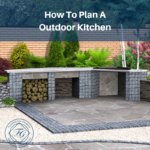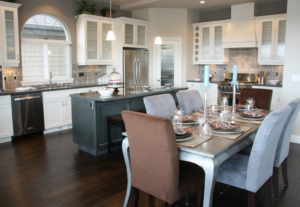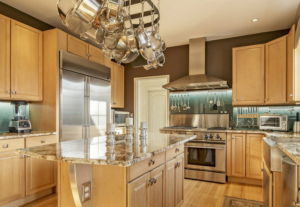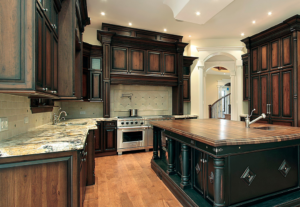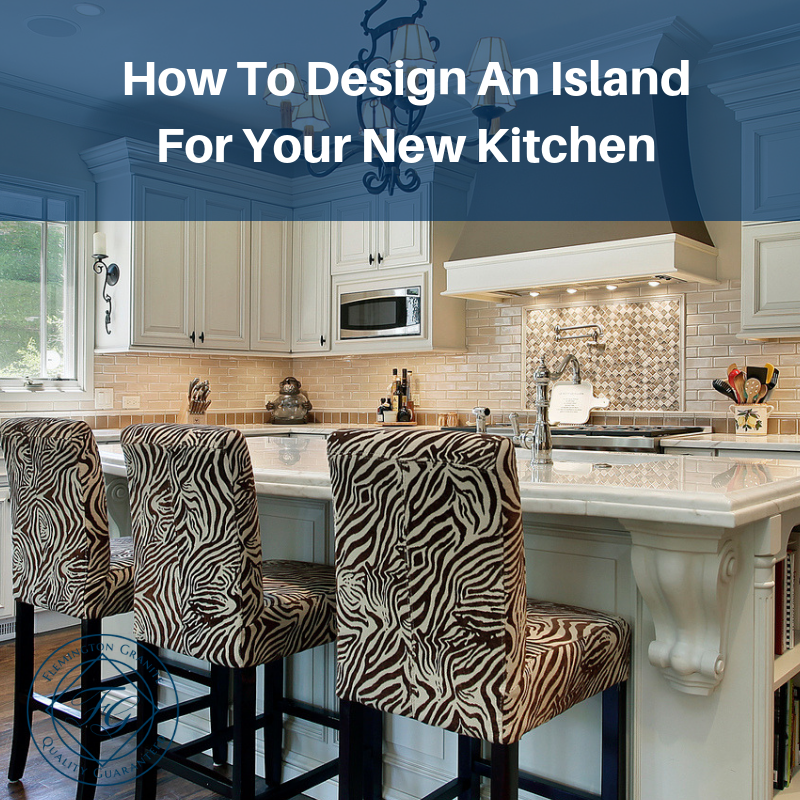
Everyone loves a well-equipped, large and warm kitchen. This is why people want to see the kitchen when house hunting, before much of anywhere else. The most sought-after thing is of course counter space, which is at a premium even if every wall is lined with countertops. This is why islands are so popular, and an effective way to bring in more space, and add more purposed space to your kitchen as well.
Before you go looking into the island of your choice, though, you want to understand the concerns that come from installing an island – not every kitchen can really have one, and not be crowded after all.
Hurdles
With two exceptions, islands become permanent fixtures in your kitchen, which means they will permanently occupy the space where you’ve installed them. In smaller kitchens, this just isn’t an option unless you go with one of those two previously-mentioned exceptions (which will be discussed at length momentarily).
You will also probably want to run power and maybe water to it if it’s a permanent island, which brings structural challenges that you wouldn’t have necessarily expected as well. So, before you commit to an island as a solution to your problem, be sure you have room for it one way or another, be sure you’re ready for the temporary damage to your house to make the addition, and make extra certain that you have a contractor whom knows what they are doing!
Island Types
There are several styles or layouts of islands to choose from. The simple square or long galley island we tend to imagine is only the most basic form factor, and today, we’re going to look at some of the more interesting ones out there, and why they might be desired.
L-Shaped Islands
L-Shapes are probably more common than others, but still not seen as often as more basic approaches. These provide a lot of counter space while using square footage more wisely.
Pros
- Very large, lots of counter and cabinet/drawer space.
- Extra workspace that’s easily compartmentalized and sorted.
- Very social bar-style eating is simple to achieve with an L-shaped island.
Cons
- The angularity of these can kind of segment your kitchen in ways you may have not anticipated, and ruin the flow.
- The sharp corners can also create something of a claustrophobic, boxy sense to things.
U-Shaped Island
U-Shaped islands have a lot of the advantages of L-Shaped, though more symmetrical, and with even better bar-style dining where desired. It’s not uncommon to add a second sink and perhaps a drink station to U-Shaped islands like these as well.
Pros
- Lots of space.
- Lots of storage capacity.
- Plenty of countertop space.
- If you add an appliance to the island itself, you can really make the best use of space as a chef.
Cons
- These take up a lot of space, and unless you have an open kitchen plan, or a very large kitchen, these will get away from you quickly, overtaking your whole kitchen.
- Like L-Shaped islands, the boxy nature of this can mess with the ambience of your kitchen, and its flow, if you don’t plan very carefully with these in mind.
Galley Island
Galley islands are the sort that most picture. The smaller ones in smaller kitchens are technically galley style, though traditionally, they’re much longer rectangular structures.
Pros
- Simple design makes them less of a nemesis to the rest of your kitchen planning.
- Excellent storage.
- Bar-style eating may be a little less social due to the length, but it’s easier to optimize.
Cons
- It’s not “interesting” compared to some other popular designs.
- Appliances and sinks don’t fit as well with these.
Circular Island
Circular islands are actually pie-slice quarter-circles, and it’s a unique design not often seen.
Pros
- Lots of prep space.
- Lots of seating options for table-height chairs.
Cons
- The curve can mess with space efficiency.
- Storage space is at a premium.
Rolling Island
A rolling island is on wheels, and while you can design your own, these are often just purchased and assembled.
Pros
- Can be anywhere.
- Excellent for small kitchens, as we hinted earlier.
- Can also be a food tray or extra table.
- Easy to move around.
- A cheap option that’s not permanent.
Cons
- Things on wheels are not that stable.
- Not as classy.
- Can be a pain to roll out.
- Useless for bar style eating.
- Minimal storage and counter space.
Furniture Style Island
These stand on rounded feet which can produce a unique aesthetic.
Pros
- Unique aesthetic.
- Very decorative.
- Easier to clean around.
- Openness keeps it from sectioning your kitchen.
Cons
- Storage is definitely at a premium with this design.
- Furniture tops are more fragile than something like granite or quartz, making these overall less durable.
Flemington Granite
We have decades of experience installing gorgeous, long-lived stone countertops, and we’re ready to help you make your kitchen and/or bathroom really sing with beautiful granite, travertine or marble. Fill out our contact form today!

